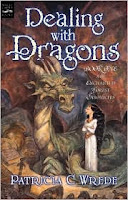
Written and Illustrated By Brian Selznick
Scholastic; 2007; 533 pages
Juvenile Fiction; Realistic Fiction; Caldecott Award
Grades: 3-6
ISBN:
978-04-39813-785Hugo's father has been killed in a fire, and his uncle has disappeared. Left on his own to take care of the train station clocks, Hugo embarks on a journey of discovery. While repairing a clockwork figure that is his only link to his father, Hugo makes connections with a filmmaker, a fellow orphan, and the world around him.
My Thoughts
This was a very interesting book. It is definitely not a picture book, yet it won the Caldecott Medal...and rightly so. The artwork, though black and white, is amazing. There is depth and detail that is almost photo-realistic. Also, towards the end of the book, the drawings are intermingled with actual stills from old silent films. The pictures are also integral to the text. They are not illustrations, they
are the text. I would be reading along, and then there would be a series of 4 or 5 full spread pictures that would pan across a scene, or zoom in on important actions. Each set was like a single frame of a film. It was amazing. Then the text would pick up again, only it wouldn't pick up where it left off, it would pick up where the pictures left off. It was innovative, unique, and totally enthralling.
I think that kids will love this book. The story line is interesting. Since it has a male protagonist, it will appeal to both boys and girls. Also, movies are such a huge part of modern culture that a book that addresses their beginnings will intrigue children. As will the whole notion of clockwork and mechanisms in our technological, micro-chip society. The writing is well done, the pictures are flawless. It will challenge younger readers lexically, but the pictures won't hinder older kids. (The size of the book alone will make any reader, young or old, feel like they have accomplished something upon completion.) I heartily, and without reservation, recommend this book to everyone...child and adult.
*Sidebar: I saw this at my library as an audiobook. Which literally shocked me. I am normally a huge proponent of audio and e books, but in this case I am not. DO NOT GET IT AS AN AUDIOBOOK. The pictures are integral to the text. You will not get the same experience.
The Thoughts Of Others:
Publisher's Weekly's 2007 review found the book to be "an artful blending of narrative, illustration and cinematic technique, for a story as tantalizing as it is touching." They appreciated the use of movies both in the plot and in the illustrations. They saw the book as more of an experience than merely a read.
Kirkus also reviewed the book in 2007. They drew comparisons between the book and silent films, seeing the illustrations as they pan and zoom as traditional film storyboards which often told the story better than text alone ever could have. They also liked that the book was
"an homage to early filmmakers as dreammakers."




















